Japanese Dry Curry is made with ground meat and a few vegetables. As the name suggests it does not have gravy, unlike other Japanese curry like my Katsu Curry. But it is equally tasty.
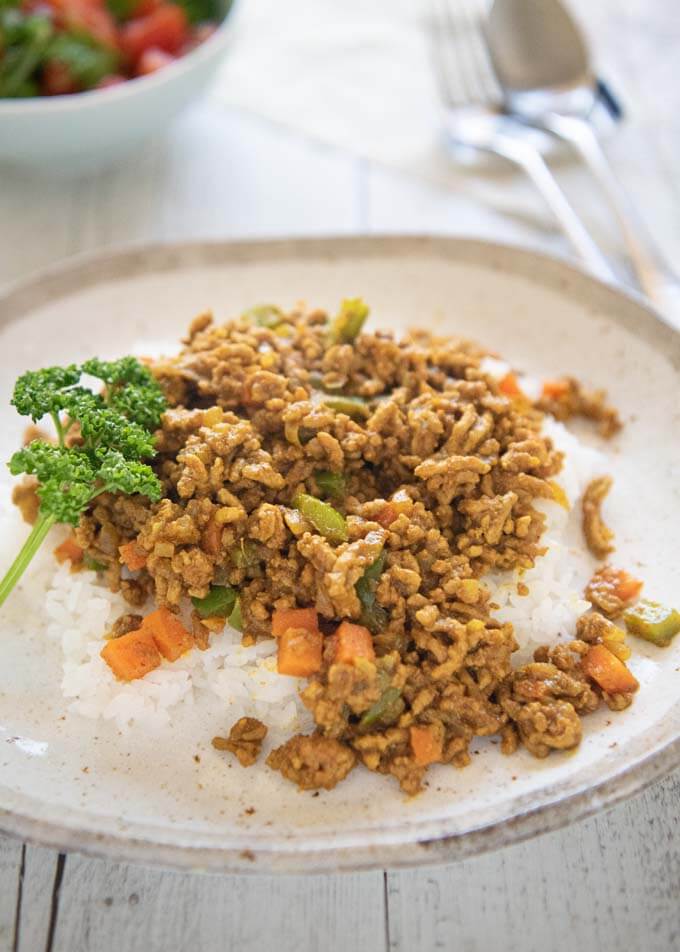
Japanese Dry Curry looks like Indian Keema curry, but the flavouring is quite different. It is a quick and simple dish to make. It goes so well with rice as well as bread.
About Japanese Dry Curry
Japanese people call today’s dish ‘dorai karē’ (ドライカレー), which is simply the Japanese way of pronouncing the English words ‘dry curry’. The name came from the fact that it does not have gravy, hence ‘dry’.
Dorai karē was invented by a Japanese chef in the 1910s when he was working on the ocean liner Mishima Maru, operated by Nippon Yūsen (known as NYK Line).
At the time, the quality of service and food on NYK passenger liners were known to be world-class. So the chef who invented Dry Curry must be highly skilled. Japanese Dry Curry is a variation of Japanese curry and rice.
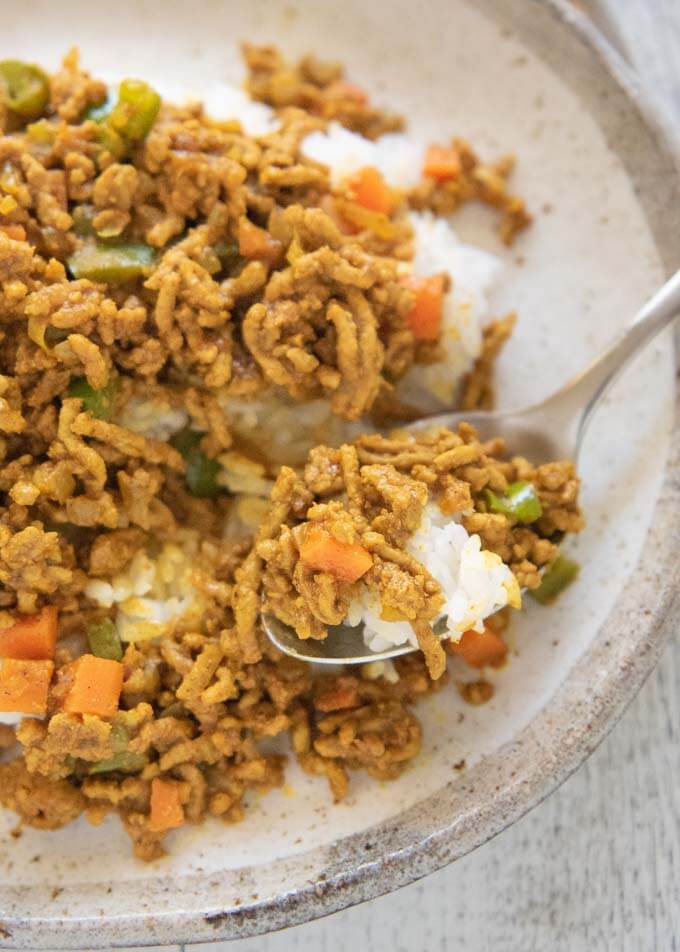
Unlike Indian Keema curry, Japanese Dry Curry does not use any spices other than curry powder. You can certainly taste a spicy curry with a bit of heat. But the curry flavour is milder, with a hint of sweetness that comes from ketchup and Worcestershire sauce added to it. This combination of flavours really makes today’s curry a typical Japanese curry dish, I think.
Two Types of Japanese Dry Curry
In Japan there is also another dish called Dry Curry. In fact, the characters and the sound are exactly the same even in Japanese. If someone mentions about ‘dorai karē’ (ドライカレー), you have to make sure which one the person is talking about.
The second Dry Curry dish is a curry-flavoured fried rice. The flavour of the fried rice is almost identical to the other Dry Curry with ground meat, but it’s a completely different dish as you can see in the left photo below.
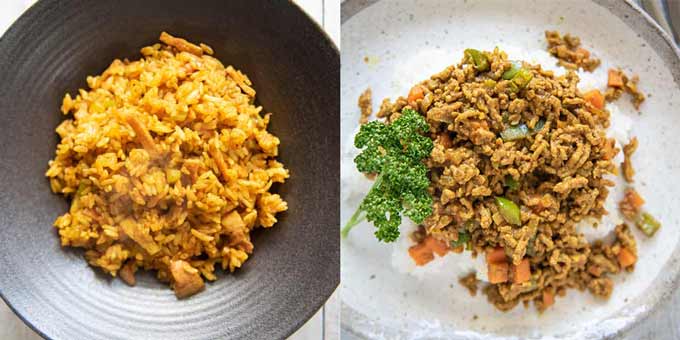
Depending on their past experience, Japanese people visualise either Keema curry-like Dry Curry (today’s recipe) or the fried rice version of Dry Curry when they hear ‘dorai karē’.
This could cause a serious communication issue, especially when a person is going to cook Dry Curry for another person and this person is thinking of the other Dry Curry. How confusing!
My imagination goes to today’s recipe because my first encounter with this curry was the dish my sister made when we were teenagers. But I like both versions. I will publish a fried-rice version of Dry Curry next week.
What’s in My Japanese Dry Curry
The ingredients can be grouped into Curry Ingredients and Curry Flavouring ingredients.
Curry Ingredients
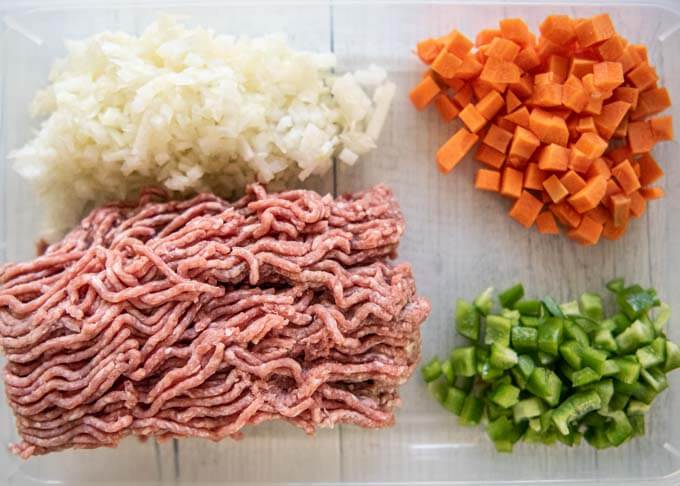
- Pork mince (ground pork)
- Finely chopped onion
- Diced carrot
- Diced capsicum
- Salt & pepper
- Oil to sauté
I used pork because pork mince usually contains more fat than beef. Since the curry has no gravy, you need a bit of fat in the meat.
You can use different vegetables that can be diced into small pieces. Onion needs to be there to give a flavour to the curry. I added carrot and capsicum to give colour to the dish. In place of capsicum pieces, chopped beans or green peas would be good. You can also add chopped tomatoes and/or corn kernels.
Dry Curry Flavouring
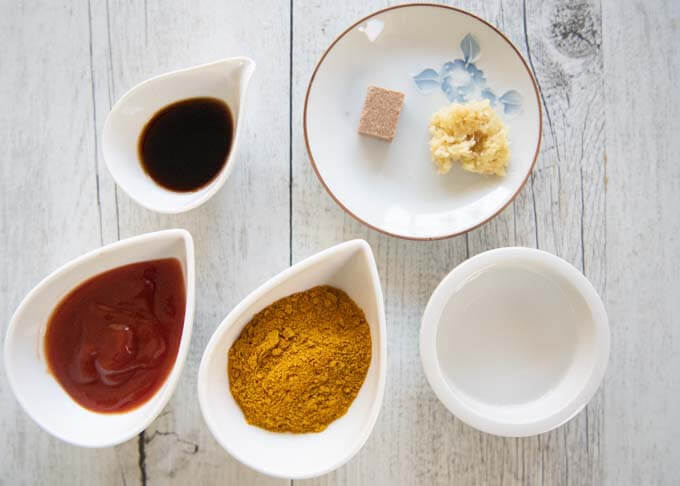
- Grated ginger
- Curry powder
- Ketchup or tomato sauce
- Worcestershire sauce
- Beef stock cube (or powder)
- Water
Some recipes add garlic, but I wanted the flavour to have authentic Japanese-style flavour without it.
How to Make Japanese Dry Curry
You can make Japanese Dry Curry by simply sautéing the ingredients in a certain order.
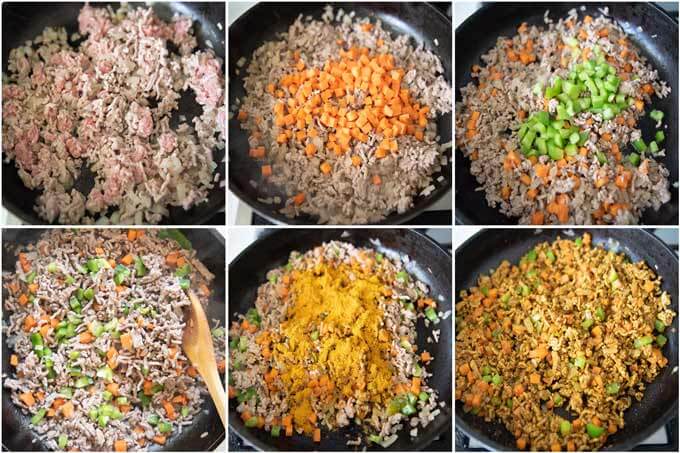
- Sauté onion.
- Add pork mince and cook until it changes the colour.
- Add carrot and sauté, then add capsicum and mix quickly.
- Sprinkle curry powder over the vegetables and sauté.
- Add the rest of the Dry Curry Flavouring ingredients and cook until there is hardly any liquid left.
My Dry Curry is very dry with almost no liquid, and that’s what it is supposed to be.
The traditional way of eating Japanese Dry Curry is to put it over freshly cooked rice and eat it just like the other type of curry with gravy. But I think that you can have it with bread too. Use it as a filling in a bread roll or a sandwich like this.
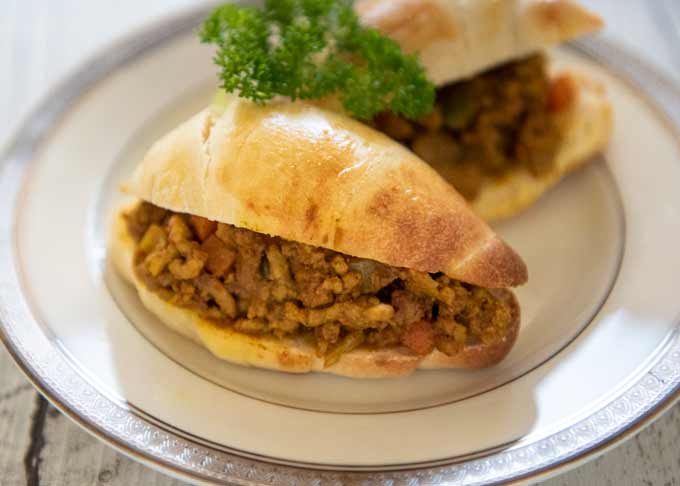
You can keep Japanese Dry Curry for 2-3 days in the fridge. You can also freeze it for 1 month.
Yumiko![]()
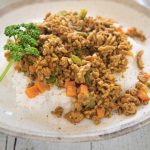
Japanese Dry Curry is made with ground meat and a few vegetables. Unlike other Japanese curry such as my Katsu Curry, it has no gravy. But it is equally tasty. Japanese Dry Curry is a quick and simple dish to make. It goes so well with rice as well as bread.
Don't forget to see the section 'MEAL IDEAS' below the recipe card! It gives you a list of dishes that I have already posted and this recipe that can make up a complete meal. I hope it is of help to you.
- 400g / 0.9lb pork mince (note 1)
- 100g / 3.5oz onion finely chopped
- 80g / 2.9oz carrot diced into 1cm cubes (note 2)
- 50g / 1.8oz capsicum diced into 1cm cubes (note 2)
- Salt & pepper
- 1 tbsp oil
- 10g / 0.4oz ginger grated
- 3 tbsp curry powder (note 3)
- 3 tbsp ketchup (or tomato sauce)
- 1½ tbsp Worcestershire sauce
- 1 beef stock cube / bouillon cube (or use 2 tsp powder)
- 3 tbsp boiling water (to dissolve stock cube)
- 150-200g / 5.3-7.1oz cooked rice per serving (note 4)
- Sprigs of parsley
-
Crumble stock cube into boiling water and mix to dissolve.
-
Heat oil in a frying pan over medium heat, sauté onion pieces until they become soft and translucent.
-
Add pork mince to the pan, a dash of salt and pepper to season, and cook, breaking it up as you go.
-
When the mince has changed colour to light brown, add carrot and cook for a couple of minutes, then add capsicum and quickly mix.
-
Reduce to low heat. Add ginger and curry powder to the pan and sauté for a minute or two, until the curry powder is all integrated with the other ingredients and there is no dry powder left.
-
Add ketchup, Worcestershire sauce, and the water with beef stock to the pan. Bring the heat to medium and mix well.
-
When the liquid is almost evaporated, turn the heat off.
-
Put rice on a serving plate, shaping a flat mound. Pour the Dry Curry over the rice. Place a sprig of parsley on the side and serve immediately.
1. Instead of pork, you can use beef or even chicken mince. I like pork because it contains a bit more fat in general, which makes the dish richer.
2. You can use different vegetables if you like. Chopped beans or green peas are good. You can use frozen mixed vegetables with carrot, corn, beans/peas as well.
3. I used the curry powder that I could buy at supermarkets such as Keen's Curry powder. It is quite spicy. You can also use mild curry powder if you want to reduce spiciness.
4. Dry Curry with rice is the standard way of serving it in Japan. But you can have Japanese Dry Curry with bread too. You can even make a sandwich with Dry Curry as a filling or a Dry Curry roll.
5. You can keep Japanese Dry Curry for 2-3 days in the fridge. You can also freeze it for 1 month.
6. Nutrition per serving. It does not include rice.
serving: 259g calories: 360kcal fat: 26g (40%) saturated fat: 8.2g (41%) trans fat: 0.0g polyunsaturated fat: 2.7g monounsaturated fat: 12g cholesterol: 72mg (24%) sodium: 446mg (19%) potassium: 694mg (20%) carbohydrates: 14g (5%) dietary fibre: 3.8g (15%) sugar: 6.5g protein: 20g vitamin a: 71% vitamin c: 59% calcium: 5.2% iron: 15%
Meal Ideas
A typical Japanese meal consists of a main dish, a couple of side dishes, a soup and rice. I try to come up with a combination of dishes with a variety of flavours, colours, textures and make-ahead dishes.
For the spicy Dry Curry, I think a dish using eggs with a gentle flavour goes well. I picked Tamago Toji but if you wish, you can cook a plain omelette instead or serve a fried egg on top of the Dry Curry.
For another side dish, I picked a fresh salad to balance the overall flavours of the meal. Fukujinzuke is the condiment that is often served with the gravy-style curry.
- Main: Japanese Dry Curry – today’s recipe, you can make ahead.
- Side dish 1: Japanese Style Scrambled Eggs (Tamago Toji) – plain omelette or fried egg is also good.
- Side dish 2: Mixed Vegetable Salad Dressing – you can pick and choose any fresh salad.
- Soup: Tofu and Wakame Miso Soup – or your favourite ingredients.
- Condiment: Home-made Fukujinzuke (Condiment for Japanese Curry) – make ahead.
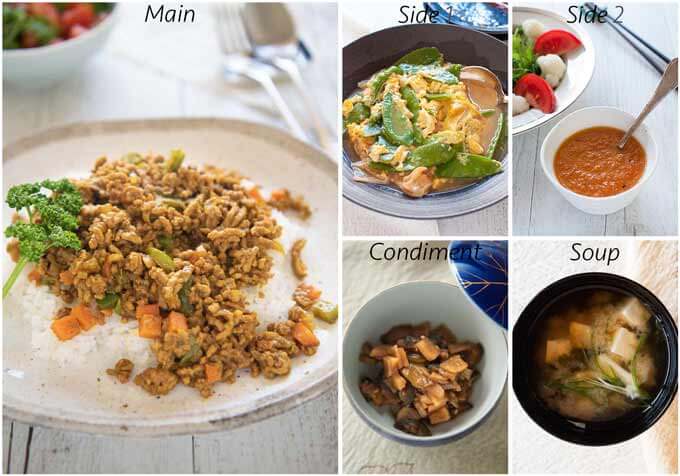
My husband and I are big fans of this recipe. I make mine with peanuts, aubergine, carrots, peas, onion and chicken mince. We have it in lettuce wraps.
Hi Nancy, what a good idea! it’s healthier than having dry curry with rice.
Can raisins be added to dry curry?
Hi Shahbaz, yes, you can. Raisins would go well.
Ohhh! I can see myself making this. The ingredients and substitute(s) are so easy to come by. I definitely have to try it.
Thank you for sharing.
Hi JJ, please do and let me know how it went!
Omg, this dish is amazing.
I had all the ingredients in the fridge /pantry so dinner was easily sorted. Any meal with Worcestershire sauce is bound to be delish and this little ripper delivered big time.
This will definitely be a family favourite on a regular basis.
Thanks Yumiko
Hi Barb, I’m glad you and your family love it! So easy to make and flavoursome, right?
It was easy peasy to make. Finished it off for lunch in a jaffle, really tasty.
Jaffle is a great idea!